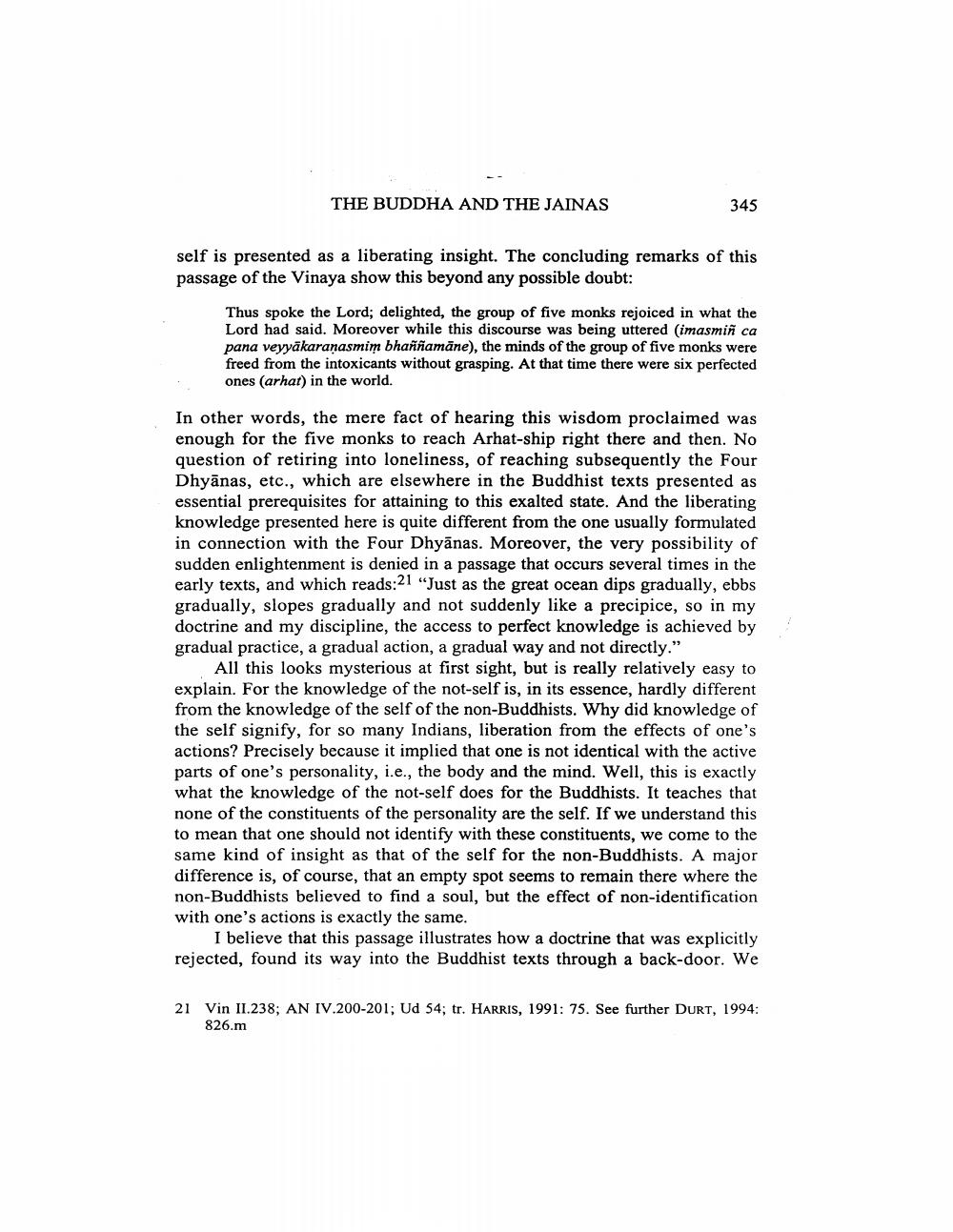________________
THE BUDDHA AND THE JAINAS
345
self is presented as a liberating insight. The concluding remarks of this passage of the Vinaya show this beyond any possible doubt:
Thus spoke the Lord; delighted, the group of five monks rejoiced in what the Lord had said. Moreover while this discourse was being uttered (imasmiñ ca pana veyyākaranasmim bhaññamāne), the minds of the group of five monks were freed from the intoxicants without grasping. At that time there were six perfected ones (arhat) in the world.
In other words, the mere fact of hearing this wisdom proclaimed was enough for the five monks to reach Arhat-ship right there and then. No question of retiring into loneliness, of reaching subsequently the Four Dhyānas, etc., which are elsewhere in the Buddhist texts presented as essential prerequisites for attaining to this exalted state. And the liberating knowledge presented here is quite different from the one usually formulated in connection with the Four Dhyānas. Moreover, the very possibility of sudden enlightenment is denied in a passage that occurs several times in the early texts, and which reads:21 "Just as the great ocean dips gradually, ebbs gradually, slopes gradually and not suddenly like a precipice, so in my doctrine and my discipline, the access to perfect knowledge is achieved by gradual practice, a gradual action, a gradual way and not directly."
All this looks mysterious at first sight, but is really relatively easy to explain. For the knowledge of the not-self is, in its essence, hardly different from the knowledge of the self of the non-Buddhists. Why did knowledge of the self signify, for so many Indians, liberation from the effects of one's actions? Precisely because it implied that one is not identical with the active parts of one's personality, i.e., the body and the mind. Well, this is exactly what the knowledge of the not-self does for the Buddhists. It teaches that none of the constituents of the personality are the self. If we understand this to mean that one should not identify with these constituents, we come to the same kind of insight as that of the self for the non-Buddhists. A major difference is, of course, that an empty spot seems to remain there where the non-Buddhists believed to find a soul, but the effect of non-identification with one's actions is exactly the same.
I believe that this passage illustrates how a doctrine that was explicitly rejected, found its way into the Buddhist texts through a back-door. We
21 Vin II.238; AN IV.200-201; Ud 54; tr. HARRIS, 1991: 75. See further Durt, 1994:
826.m




